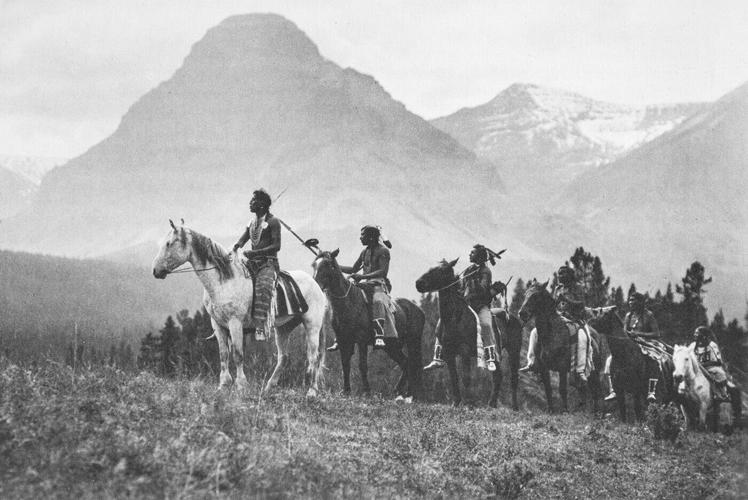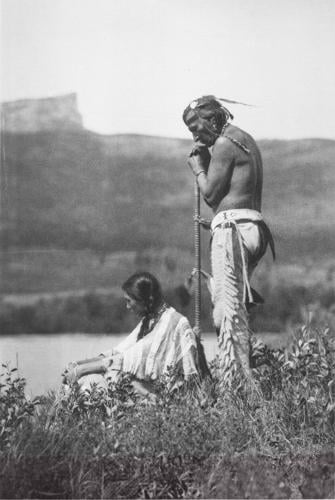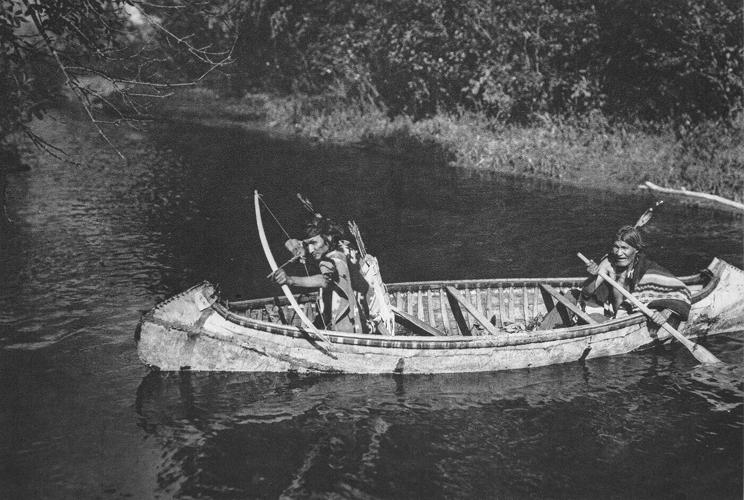New exhibit at Manitou castle features historic photos of American Indians

Photographer Roland Reed traveled the country around the turn of the 20th century and enmeshed himself with different American Indian tribes. He worked to earn their trust and permission to take photos, seeking to document their lives before the U.S. government altered their lives. It opens Friday and runs through August.
photos Courtesy of Manitou Springs Historical Society
Very few people were taking photos of Indigenous people at the turn of the 20th century.
For photographer Roland Reed, it was a passion project — he spent the bulk of his life documenting the lives of a dozen Indigenous American tribes. His work lives on in a new exhibit at Miramont Castle in Manitou Springs. The castle, owned by the nonprofit Manitou Springs Historical Society, will display 11 photogravures and two-dozen piezography prints of Reed’s work. The photos were printed from Reed’s original glass plates and negatives borrowed from Denver Museum of Nature and Science, which has a sizeble chunk of Reed’s estate.
The exhibit will be up through August and opens with a free reception from 5 p.m. to 8 p.m. during First Friday.
“There were a finite number of people (photographing Indigenous people) and glass plates, and in those days they were carrying glass plates in all kinds of modes of transportation,” said Dave Wolverton, who helped curate the exhibit. “A lot of times they got broken or collections got lost. To have a body of work like Reed’s that had very little exposures is pretty special.”
The American Indians showcased in Reed’s photos are members of the Ojibwa, Blackfeet, Navajo, Hopi and Cheyenne tribes. Reed was a Pictorialist, a term derived from the Pictorialism movement that began in the 1860s in Europe. Pictorialists sought to make their photos more like art, with romantic or idealized imagery, soft focus and framed or staged scenes much like the composition of a painting.
Reed liked to depict the tribes as they were, before the U.S. government changed their lives and culture, by forcing their children into boarding schools, cutting their hair and banning the use of native languages. He enmeshed himself with the tribes, earning their trust and permission to create his photos.
“Reed was careful to use all of the correct clothing and pottery. He would have depicted them as they would have been,” said Miramont Castle director Peggie Yager. “He wanted to document them as they were, not as they were being changed into the White way of life.”
While Reed didn’t own a home in the Pikes Peak region, he stayed for lengths of time with Marcellus and Lillian Douglass, a married Manitou Springs couple. He also opened a photography studio in Denver in 1920, where he worked until 1927 doing studio and commercial photography.
Excellent Vietnamese food served up at this unassuming Colorado Springs eatery | Dining review
During his last stay with the Douglasses in 1934, he had a freak accident — slipping on a banana peel in a public place — and broke his back, which eventually led to his death. He was 70. He was buried in the Douglass plot at Evergreen Cemetery, where his grave went unmarked until 2012.
Born in 1864, Reed became fascinated with the stories of the Native American tribes near where he grew up in Omro, Wis., and near a family home in Minnesota. After leaving home at 18 he took jobs with the Canadian Pacific Railroad and Great Northern Railway. Travel further exposed him to tribes around the U.S. and fueled his interest in their lives.
In 1893, Reed met Montana-based professional portrait photographer Daniel Dutro, and after an apprenticeship, partnered with Dutro to produce photos of Native Americans as advertisements for Great Northern Railway.
“In the train stations they’d have huge pictures of landscapes to advertise where the trains would go,” Yager said.
Artists’ collective near Colorado Springs works to keep art of indigo dye alive
A 1980 issue of the travel magazine Arizona Highways included a quote by Reed on his philosophy: “In approaching the Indian for the purpose of taking his picture, it is necessary to respect his stoicism and reticence, which have so often been the despair of the amateur photographer.”
Reed was never a well-known photographer; he didn’t want his photos to be used in advertising and kept many of them to himself, though he did sell some, Yager says.
“It was more a documentation of their way of life. He never intended to make a living off of it,” she said. “Most of his living he made through portrait photography. He turned down what was a lot of money at that time, like $2,500, for some of the glass plates because he did not want them to be used in advertising.”
Contact the writer: 636-0270
Contact the writer: 636-0270
Get OutThere
Signup today for free and be the first to get notified on new updates.





